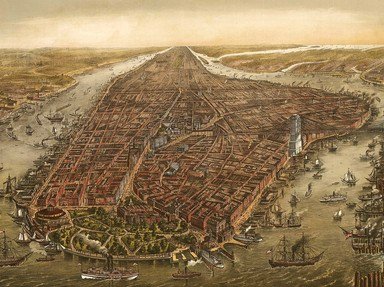Quiz Answer Key and Fun Facts
1. Founding of New Amsterdam
2. British rename settlement to 'New York'
3. The Battle of Long Island & 1st Great Fire of NY
4. New York City named first capital of U.S.A.
5. 2nd & 3rd Great Fires of New York
6. Construction of Central Park
7. Dedication of the Statue of Liberty
8. Opening of Ellis Island
9. Consolidation of the Five Boroughs
10. Harlem Renaissance begins
11. Wall Street Crash (Black Tuesday)
12. Completion of Empire State Building
13. UN Headquarters established
14. September 11 attacks
15. Hurricane Sandy
Source: Author
reedy
This quiz was reviewed by FunTrivia editor
ponycargirl before going online.
Any errors found in FunTrivia content are routinely corrected through our feedback system.
